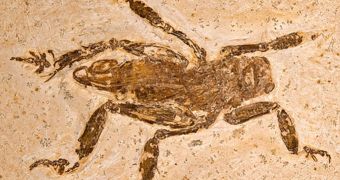In an interesting new discovery, researchers found that a group of insects did not evolve at all over the past 100 million years. The group is the ancestor of some insects that still live today, and the research shows little differences between the creatures living today and their forefathers.
The fact that these large, carnivorous, cricket-like insects did not change since the time of the dinosaurs is bound to make a lot of paleontologists and geneticists very happy. They could now study gene distribution patterns to determine if any gene exchange, loss or addition occurs.
According to the investigators, the insects that originate in those cricket-like creatures are still around today, at select locations in Africa, northern Indochina and southern Asia. The fossil that showed experts the way was found in northeastern Brazil, in a limestone fossil bed.
In addition to providing more insight into the interesting origins of the aforementioned insects, the finding also corrects an erroneous classification that experts made of another fossil similar to this one.
The work highlights the fact that the genus changed very little – at least from an evolutionary perspective – since these insects were roaming around in the early Cretaceous period, when dinosaurs reigned supreme.
This time came just before the breakup of the supercontinent Gondwana. The end of the Cretaceous, and of the dinosaurs, came more than 65 million years ago, most likely in the form of a comet.
“Schizodactylidae, or splay-footed crickets, are an unusual group of large, fearsome-looking predatory insects related to the true crickets, katydids and grasshoppers, in the order Orthoptera,” explains researcher Sam Heads, quoted by SpaceRef.
“They get their common name from the large, paddle-like projections on their feet, which help support their large bodies as they move around their sandy habitats, hunting down prey,” he goes on to say.
The expert, who holds an appointment as an entomologist at the Illinois Natural History Survey and at the University of Illinois, is the lead author of a new research paper detailing the findings. The work is published in the open access issue of the esteemed journal ZooKeys.
Heads explains that the creatures basically remained in what is called an “evolutionary stasis” for more than 100 million years. Throughout this time, the insect did not even change its preferred habitat.
Species can enter stasis periods when there is simply no reason for them to evolve. These insects were always subjected to roughly the same conditions, had the same food source, and faced the same predators. If they are adapted to their environment, then they literally have no need to change.

 14 DAY TRIAL //
14 DAY TRIAL //